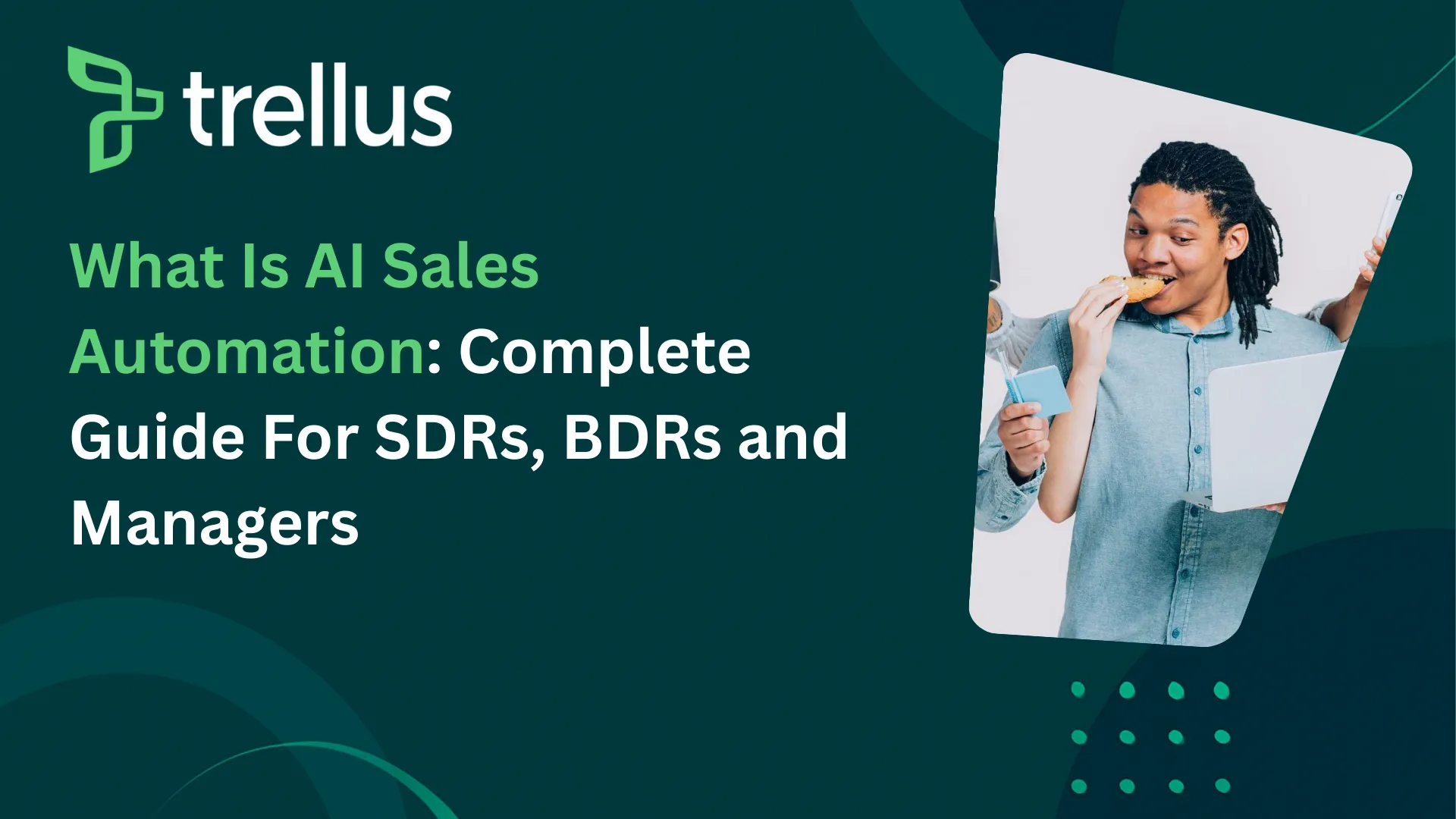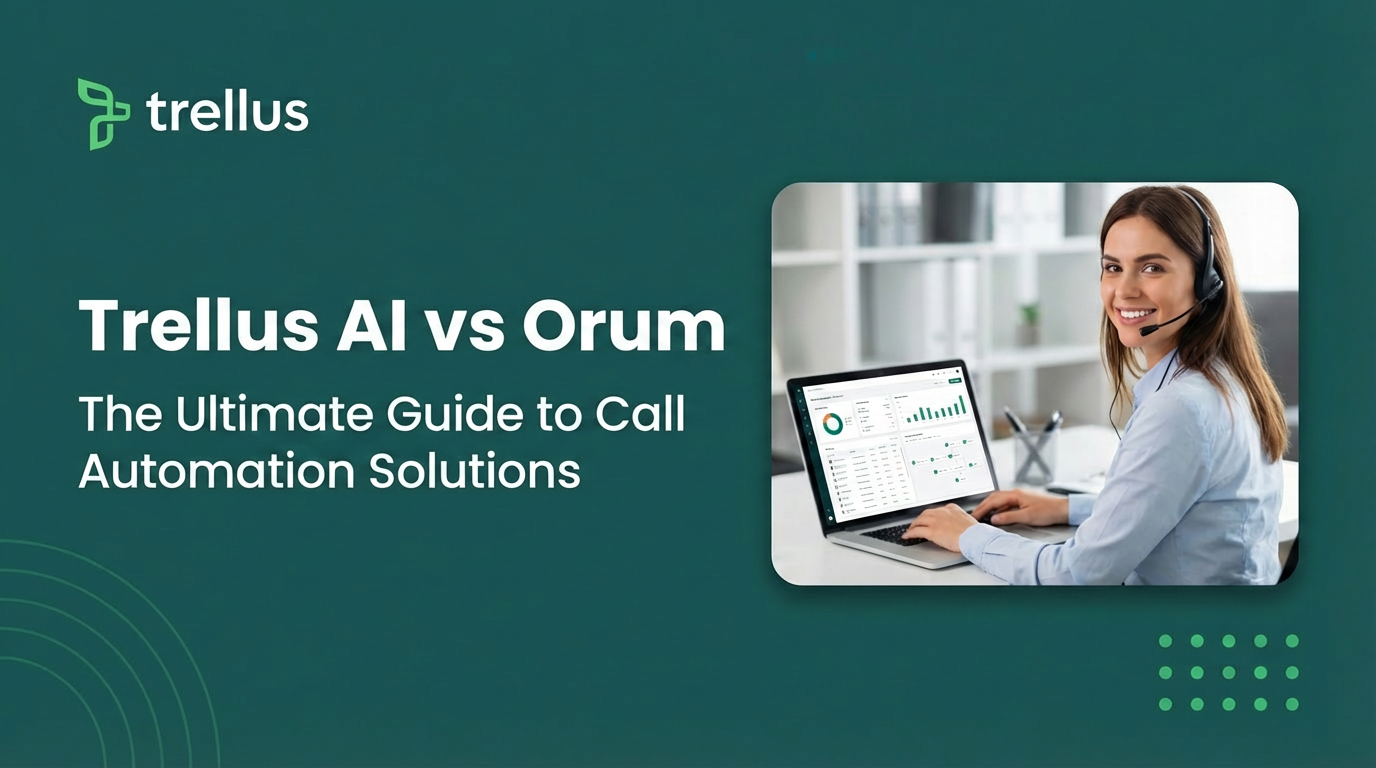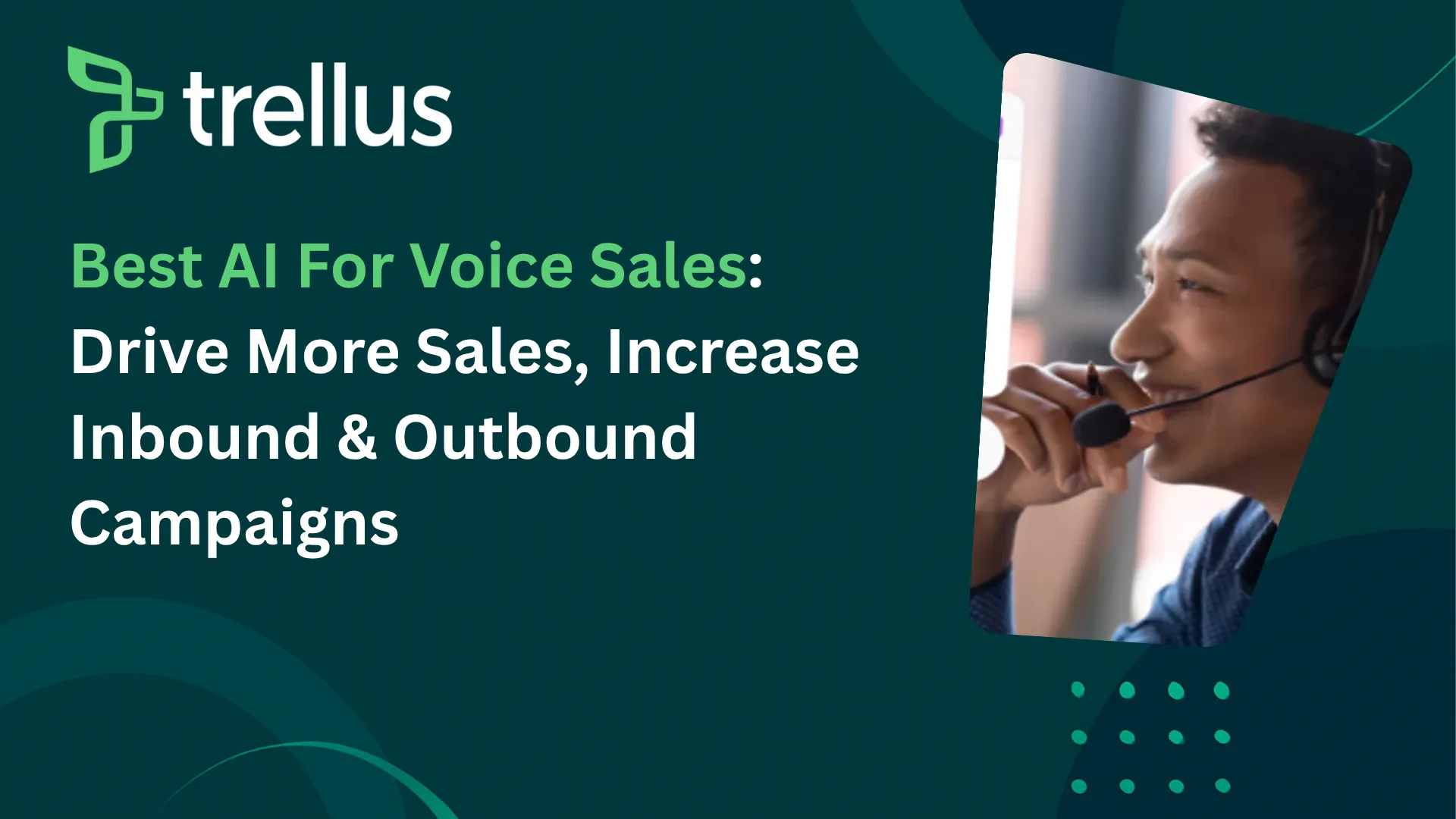
Our Top Picks


Imagine a sales rep who never sleeps, never misses a lead, speaks fluently in several languages, and always knows exactly what to say.
This isn’t science fiction anymore. AI-powered voice solutions have transformed how outbound businesses handle customer interactions.
They can talk naturally to prospects, answer questions, qualify leads, schedule follow-ups, and even close small deals, all without human supervision.
These systems are more than digital receptionists; they are intelligent, data-driven tools that understand intent, respond contextually, and can manage thousands of simultaneous calls. For outbound businesses, that means a scalable, always-on sales force that never loses momentum.
Today, the market is filled with tools for AI voice assistants in sales, each promising smarter automation and better conversion rates. However, not all of them are created equal.
To help you navigate this fast-growing space, here’s an in-depth look at what makes a powerful voice AI for sales and which solutions stand out as the best voice AI for outbound sales calls in 2025.
What Is an AI Voice Agent?
An AI voice agent is a conversational system that interacts with people over phone calls using advanced speech technologies such as Automatic Speech Recognition (ASR), Natural Language Processing (NLP), and Text-to-Speech (TTS).
In simple terms, it listens to what a customer says, understands the meaning behind the words, and responds with natural, human-like speech.
But these systems go far beyond just answering questions. They can perform specific actions such as updating CRM records, qualifying leads, confirming appointments, or routing calls to human reps when required.
Here’s a snapshot of what modern AI voice agents can accomplish:
- Manage inbound and outbound calls efficiently
They can automatically answer customer calls or initiate outbound sales calls without human involvement. Each call is contextually aware, meaning it can adapt responses based on user behavior or conversation history. - Retrieve information in real time
The system can pull data from CRMs, databases, or internal knowledge bases to provide instant and accurate responses. - Pre-qualify leads and update records
AI agents can capture lead details, assess interest levels, and record key information directly in sales systems, saving time for live agents. - Handle multilingual conversations
Many solutions now detect a caller’s language instantly and respond naturally, making them perfect for global businesses. - Transfer calls to human reps when necessary
When conversations become complex, the AI passes the call to a human agent with full context, ensuring continuity.
The potential for voice AI in outbound sales is enormous. With the ability to engage leads around the clock and at scale, businesses can transform their sales operations into a continuous engine of opportunity.
Key Features to Look for in Voice AI for Sales
When assessing AI-powered voice solutions for sales calls, it’s crucial to focus on features that directly improve call quality, conversion efficiency, and integration with existing sales infrastructure.
Below are the most impactful features that define the top-performing AI voice systems in 2025.
Multilingual and Accent-Aware Communication
Sales teams often target audiences across multiple regions and languages. A strong voice AI should not only understand and respond in different languages but also adapt to accents and regional dialects. This ensures natural, fluent communication that builds trust with prospects.
A truly global AI voice assistant must also switch languages dynamically during calls when customers use bilingual expressions or code-switching, keeping the flow natural and contextually appropriate.
Smart Interruption Handling
Natural conversations are rarely linear. People interrupt, pause, or change topics mid-sentence. An advanced AI voice system needs to manage such scenarios smoothly without losing track.
For outbound sales, this feature is vital. Prospects might interject with objections or questions while the AI is speaking. A capable system recognizes the interruption, pauses its response, and adjusts to the new conversational flow. This human-like responsiveness creates a seamless and authentic call experience.
Seamless Human Handoff
Even with powerful AI, some situations demand human empathy and persuasion. In those moments, the transition from AI to live rep must be frictionless.
A high-quality voice AI solution passes all contextual details, such as customer history, call notes, and intent, to the human agent instantly. That eliminates repetition and frustration for the customer and helps the rep pick up right where the AI left off.
Integrations with Sales Systems
Outbound operations rely heavily on CRMs, lead tracking platforms, and scheduling tools. The best voice AI for sales connects deeply with these systems to automate backend tasks.
For example, when a lead agrees to a follow-up call, the AI voice agent can automatically log it in the CRM, set a reminder, and send an update to the assigned sales rep. This level of automation ensures smooth coordination between technology and human teams.
Customization and Brand Alignment
Every brand has a tone and personality that define its communication. The AI’s voice, phrasing style, and conversational tone should reflect that identity.
The ability to modify voice persona, pacing, empathy level, and word choice allows businesses to maintain brand consistency across thousands of automated calls. This personal touch plays a crucial role in improving engagement and conversion rates.
Analytics and Continuous Training
No AI system is perfect out of the box. That’s why analytics and retraining tools are essential.
Voice AI platforms equipped with analytics dashboards allow sales leaders to review conversation outcomes, identify drop-off points, and retrain the AI model to perform better in similar scenarios. Over time, these insights turn the AI agent into a finely tuned sales performer.
Top AI-Powered Voice Solutions for Sales Calls in 2025
Now that we’ve covered the essential features, let’s look at the leading platforms shaping voice AI in outbound sales.
1. Trellus: The No.1 GoTo Benchmark for Voice AI in Outbound Sales
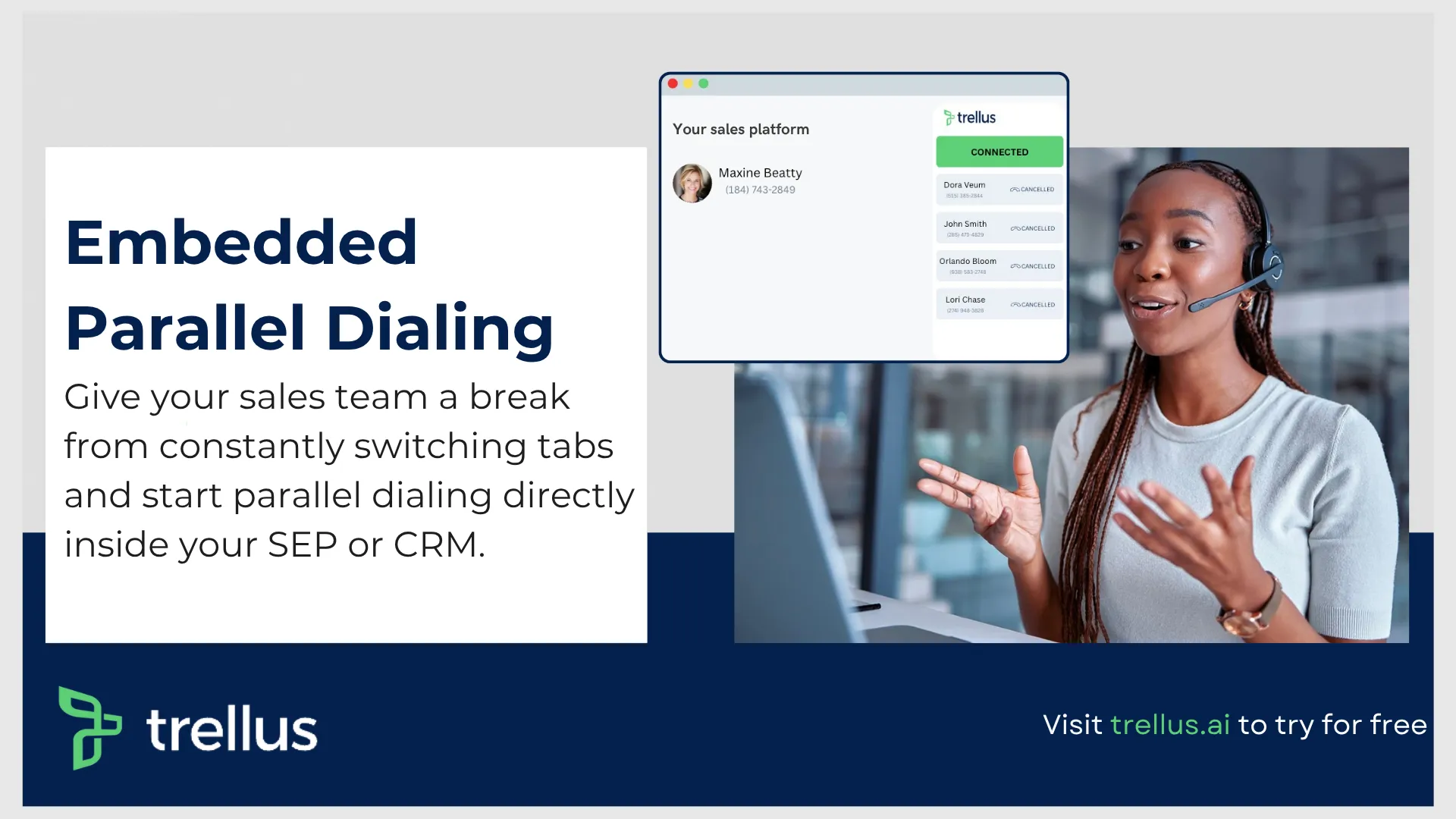
Trellus stands out as the most advanced and balanced solution for outbound sales teams in 2025. It’s designed from the ground up for sales-focused organizations that need scalable, intelligent, and brand-personalized AI calling automation.
Unlike generic virtual assistants, Trellus specializes in revenue operations. It doesn’t just answer or place calls; it engages leads in persuasive, context-aware conversations that mirror a seasoned sales professional.
Key Features
- Sales-Optimized Conversational Engine
Trellus is powered by an adaptive conversation model trained specifically for outbound selling scenarios such as cold calling, lead nurturing, and follow-up campaigns. It understands sales intent, objection handling, and qualification cues naturally. - CRM and Workflow Integrations
Trellus integrates natively with Salesforce, HubSpot, Zoho, and other major CRMs, as well as calendar and email systems. It automatically updates lead records, logs call summaries, and triggers follow-up actions. - Data-Driven Coaching Insights
Trellus provides post-call analytics that highlight buyer intent signals, sentiment shifts, and conversion probabilities. These insights guide both AI retraining and human coaching.
Pros
- Designed specifically for sales and outbound operations
- Natural conversational flow with real-time objection handling
- Seamless CRM and workflow integrations
- Multilingual voice engine with regional accent recognition
- Provides conversation analytics and agent training recommendations
Best For
Our platform is ideal for outbound sales organizations, SaaS vendors, and call-driven enterprises that want to automate high-volume prospect engagement without sacrificing personalization or conversational intelligence.
2. Synthflow:
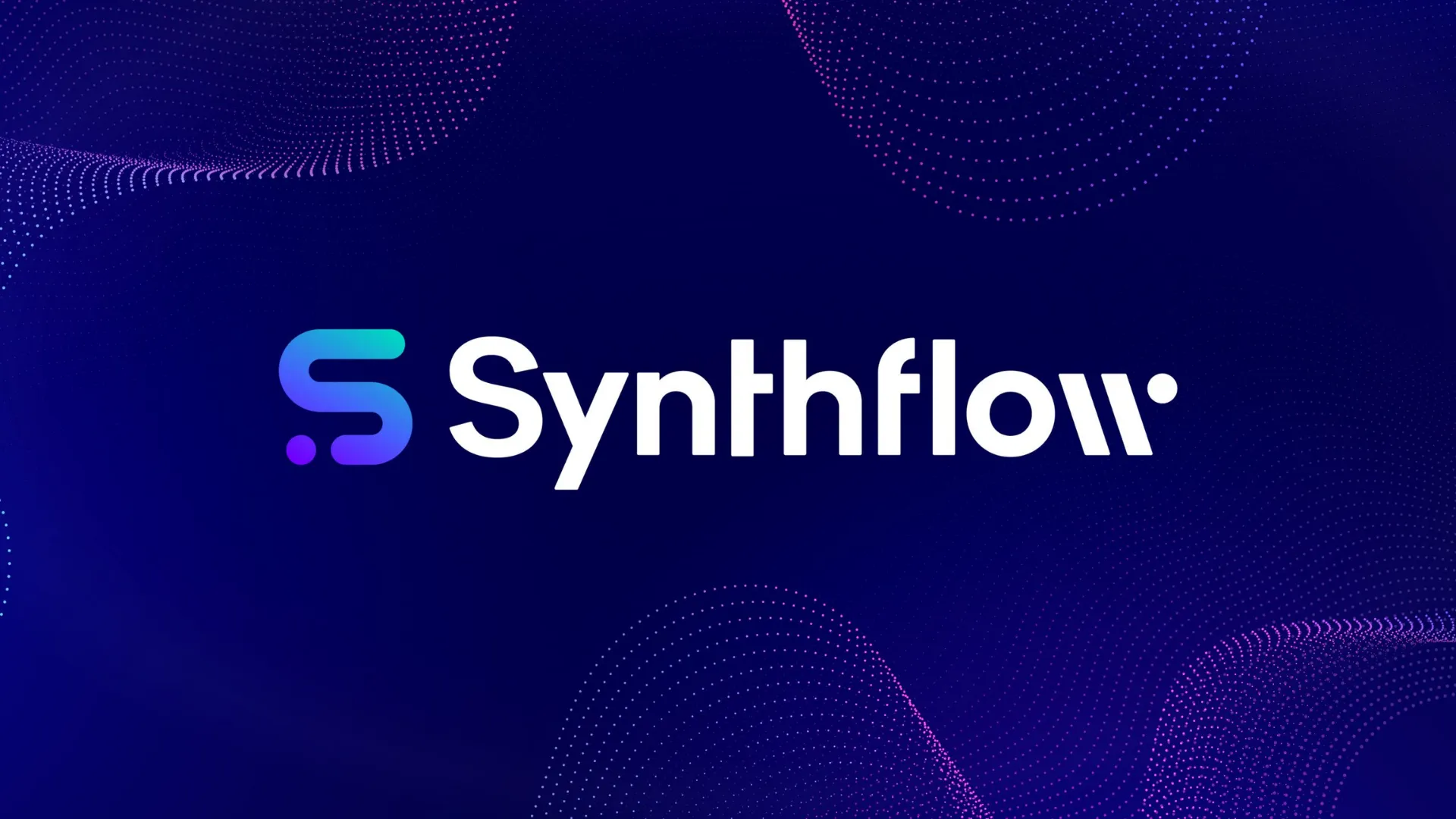
Synthflow has become a popular choice among small and mid-sized outbound businesses that want to adopt AI-powered voice solutions for sales calls without hiring technical experts.
Its interface is built for simplicity. Within hours, a team can design, test, and launch a sales-focused AI voice agent that answers inbound calls, conducts outbound campaigns, and performs CRM-related tasks.
What makes Synthflow appealing is that it combines accessibility with real functionality. Its no-code, drag-and-drop builder allows you to define call flows, integrate with databases, and configure sales actions, all visually.
Key Features
- No-Code Visual Builder
Non-technical users can build call flows easily. Sales leaders can quickly define conversation logic, qualifying questions, or call transfer rules without writing code. - Retrieval-Augmented Knowledge Access
Synthflow’s agents use RAG-based knowledge retrieval, enabling them to fetch real-time data from your internal systems to answer customer or prospect queries accurately. - Multilingual Voice Capabilities
With support for over 30 languages, Synthflow agents can connect with global audiences while maintaining a natural conversational tone. - Contextual Call Transfer
Complex interactions can be passed to human agents with a complete conversation history so sales reps can continue seamlessly. - Extensive Integrations
Synthflow connects to over 200 CRM systems, helpdesks, and other tools to automate record updates and workflows.
Pros
- Intuitive, beginner-friendly setup
- Strong CRM integration range
- Can handle inbound and outbound calls simultaneously
- Offers built-in compliance and security measures
Best For
Small and mid-sized teams looking for easy-to-deploy voice AI for sales with minimal technical involvement. Synthflow fits perfectly for agencies, appointment-based businesses, and smaller outbound call centers seeking quick ROI.
3. Cognigy:
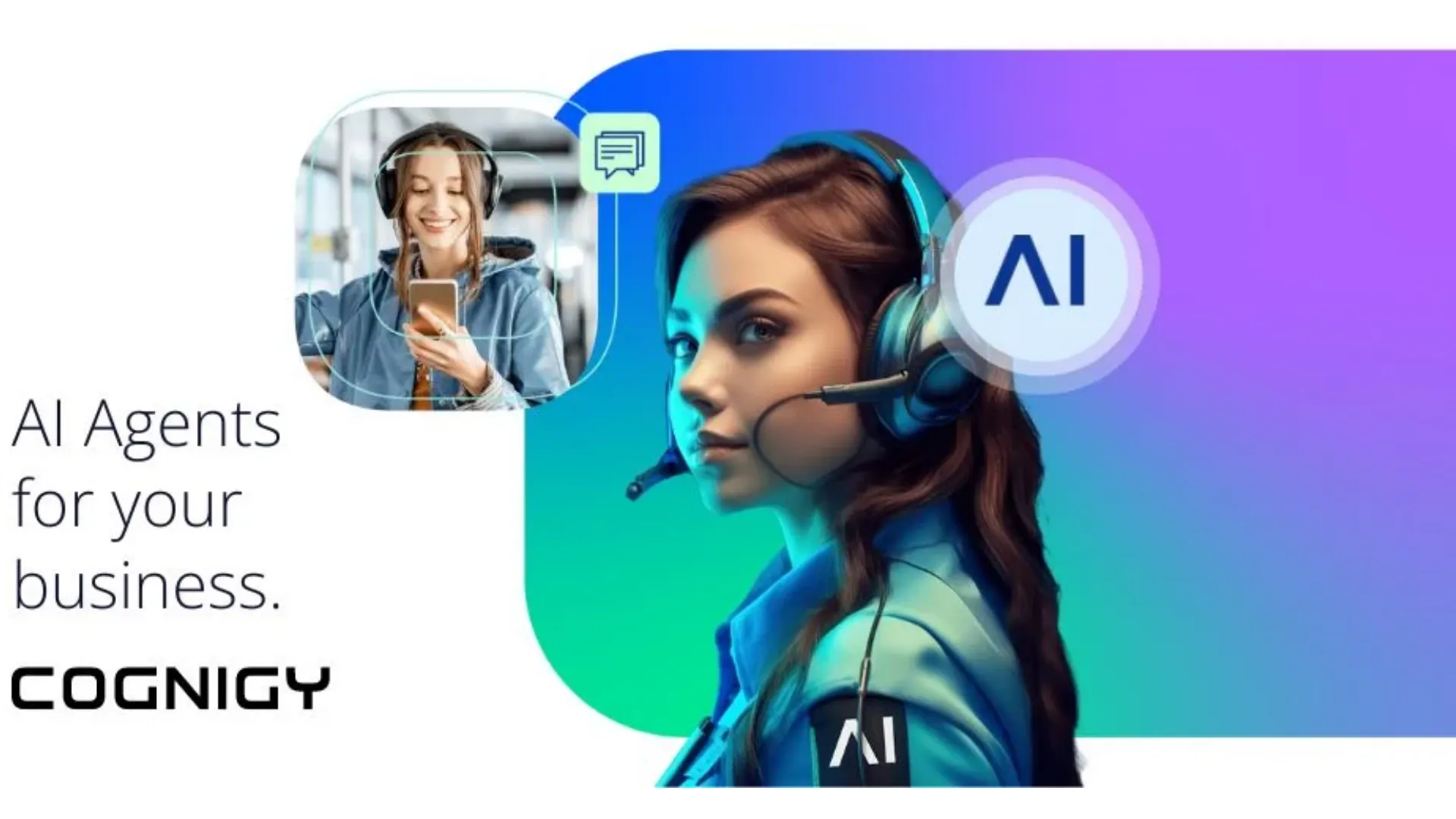
Cognigy positions itself as a sophisticated platform for enterprise-level voice automation.
Its strength lies in flexibility. With the Voice Gateway module, you can connect Cognigy to existing telephony systems and deploy multilingual voice agents capable of handling massive call volumes.
Cognigy’s interface, known as Flow Editor, allows teams to design intricate call logic. Although it’s visually guided, advanced setups benefit from developer collaboration, which is why it’s favored by large corporations with IT resources.
Key Features
- Powerful Visual Flow Editor
Enables large-scale configuration of call routes, response logic, and backend actions. - Multilingual Communication Engine
Supports over 100 languages, ensuring global coverage for sales and customer support. - Voice Gateway Integration
Connects directly with telephony systems to enable AI-powered inbound and outbound calling. - Advanced Analytics and Reporting
Real-time dashboards provide insight into performance metrics, conversation trends, and agent escalation rates. - Flexible Deployment Options
Available as SaaS, on-premise, or private cloud , ideal for regulated sectors with strict compliance needs.
Pros
- Designed for enterprise scalability
- Highly secure with customizable deployment models
- Deep integration with CRM and telephony platforms
Best For
Cognigy is best suited for large enterprises with complex sales ecosystems, multiple departments, and global audiences that demand secure, multilingual automation.
4. Bland AI:
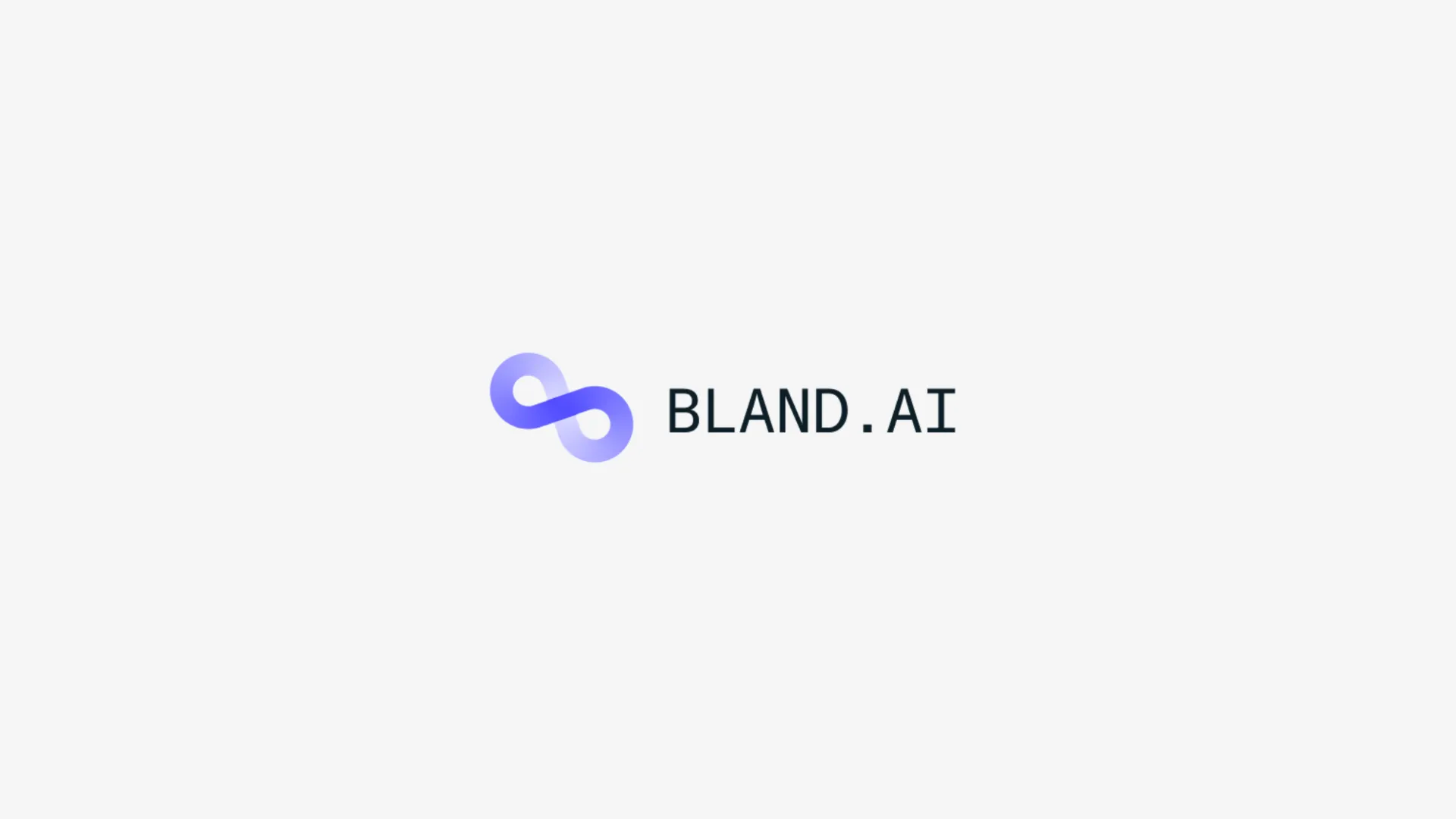
Bland AI is built for teams that want maximum control.
Instead of being a pure no-code tool, it provides developers with APIs and SDKs to create custom AI voice assistants tailored to specific business logic.
For outbound sales, this translates into unmatched flexibility.
The platform can also call thousands of prospects simultaneously, use advanced conversational flows, and integrate directly with backend APIs to automate real actions like meeting scheduling or CRM updates.
Key Features
- Programmable Voice API
Developers can control call routing, dynamic scripting, and voice customization through real-time APIs. - Voice Cloning and Customization
Offers a library of high-fidelity, humanlike voices and allows the creation of unique voice identities that reflect brand tone. - Multilingual Performance
Supports a wide range of languages, with voice synthesis tuned for realism and regional accent support. - Post-Call Analysis Tools
Includes detailed call logs and analytics to measure engagement and outcome success.
Pros
- Handles extremely high call volumes efficiently
- Offers custom voice cloning and personalization
- Integrates with virtually any CRM or application through APIs
Best For
Bland AI is the perfect fit for enterprise developers or large outbound operations that want to design completely custom AI-powered voice solutions for sales calls with precise control over logic and experience.
5. PolyAI:
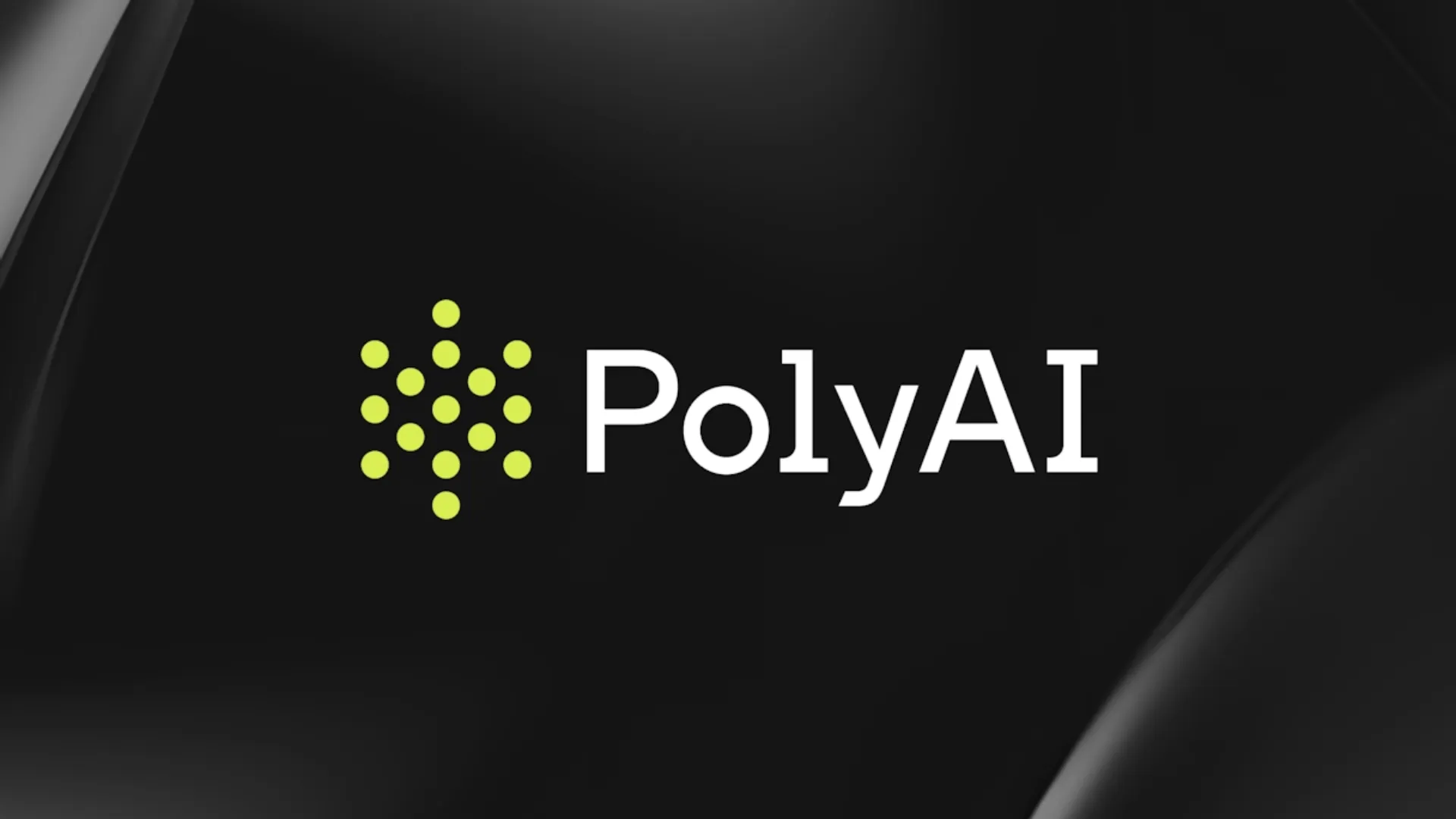
PolyAI focuses primarily on customer service automation but has steadily expanded its voice capabilities into the sales domain. It’s engineered for natural, fluid conversations that feel remarkably human, a vital element in building rapport during outbound sales calls.
The platform leverages its proprietary Natural Language Understanding (NLU) model to comprehend context and intent across multiple languages.
With real-time analytics it provides visibility into why customers are calling and how calls perform.
Key Features
- Proprietary NLU System
Enhances understanding of nuanced speech patterns and improves conversation flow accuracy. - Support for Over 45 Languages
Expands usability for global brands with diverse customer bases. - Smart Interruption Handling
Recognizes when a user interrupts and adjusts responses fluidly, ensuring a realistic dialogue. - Compliance Built-In
Meets standards for industries like healthcare and finance, where privacy and accuracy are critical.
Pros
- High natural speech quality
- Reliable real-time reporting tools
- Excellent multilingual accuracy
Best For
Large organizations in regulated industries are seeking highly conversational, multilingual voice AI to improve inbound and cross-sell opportunities during customer interactions.
6. Voiceflow:
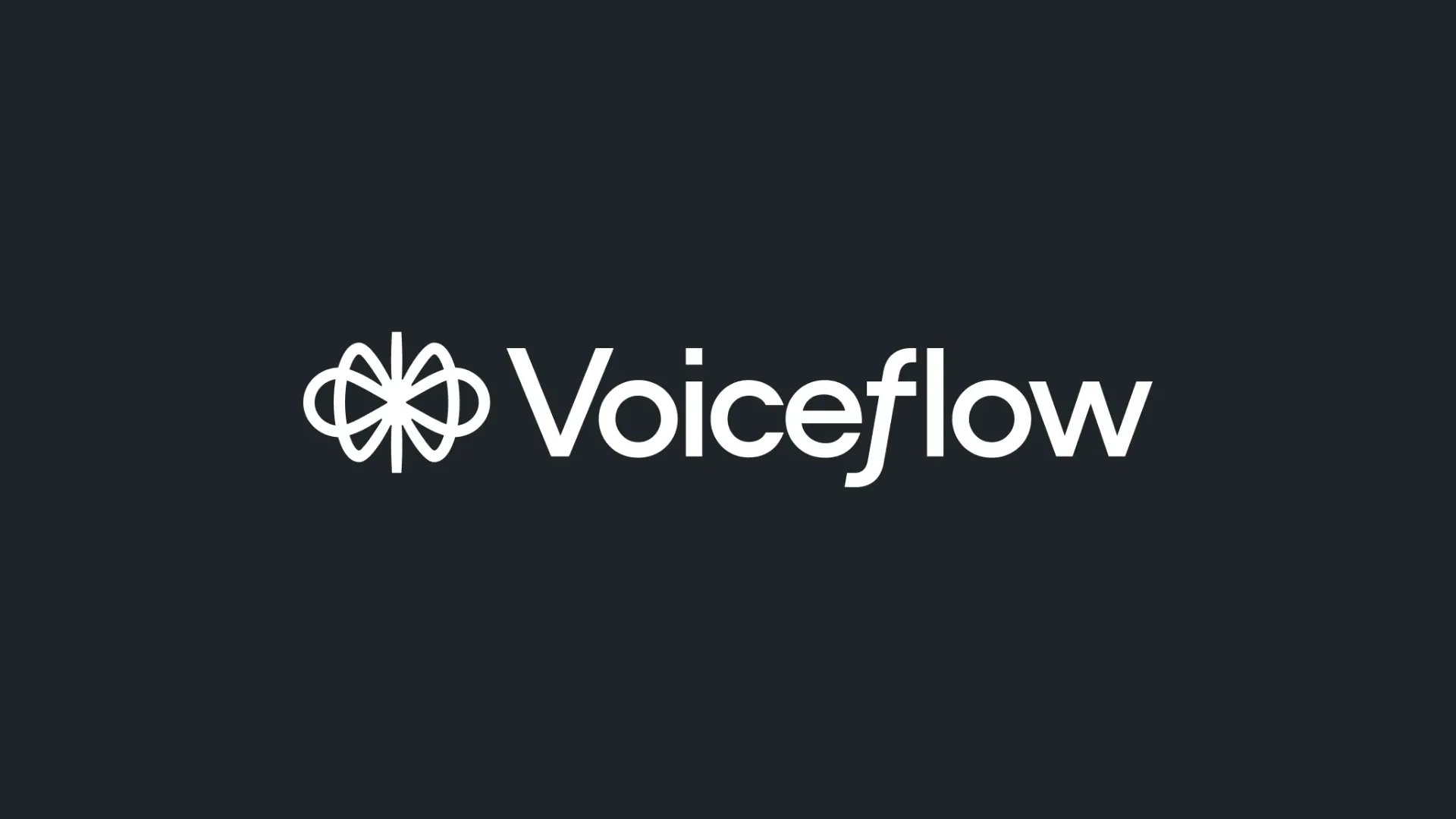
Voiceflow started as a conversational AI design platform but has grown into a capable voice automation tool for outbound and support scenarios.
Its collaborative environment allows teams to create multiple AI agents simultaneously with shared assets and reusable logic.
Sales and marketing teams appreciate Voiceflow for its flexibility. It supports integration with 300+ third-party applications and allows custom APIs, making it ideal for experimental or hybrid workflows.
Key Features
- Visual Flow Builder
Simple drag-and-drop editor to create complex call scenarios and sales dialogues. - Team Collaboration Tools
Multiple contributors can design, review, and test AI conversations in real time. - Bring Your Own LLM (BYO LLM)
Lets organizations connect their preferred AI models, allowing greater customization and data privacy. - Cloud or Private Hosting
Suitable for businesses concerned about security or regulatory compliance.
Pros
- Easy-to-use visual interface
- Highly flexible through APIs and custom LLMs
- Offers free and scalable paid plans
Best For
Voiceflow suits startups and SMBs experimenting with AI voice automation for lead generation or appointment-setting campaigns who want to maintain creative control.
7. Regal:
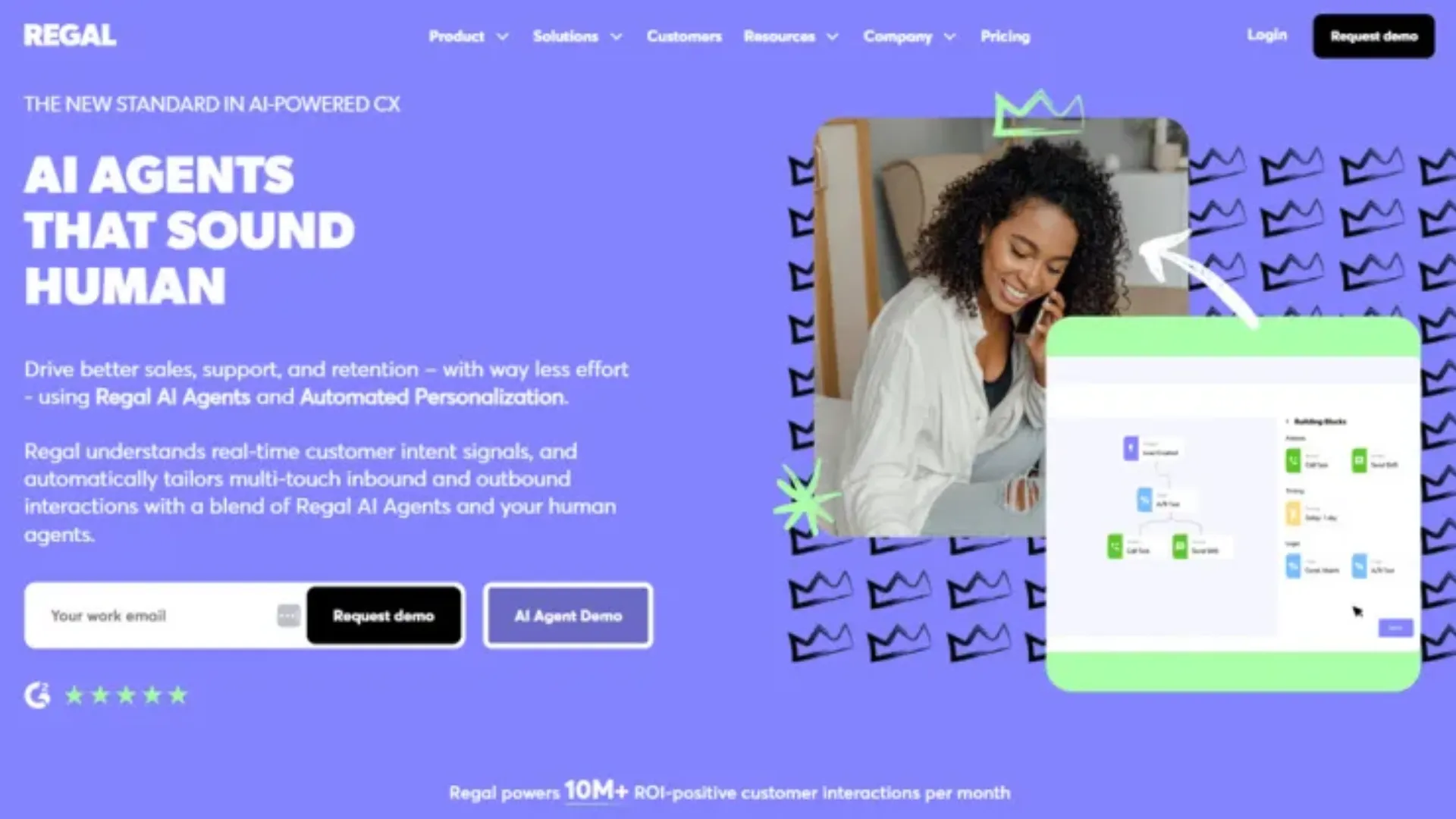
Regal is built to optimize proactive outreach.
It specializes in outbound calling campaigns where speed, personalization, and conversion rates matter most. Using its no-code AI voice agent builder, businesses can automate customer follow-ups, reminders, and lead qualification.
The standout feature of Regal is its focus on A/B testing and call performance monitoring. It allows sales teams to test different scripts, tones, and follow-up approaches to see what resonates best with their audience.
Key Features
- No-Code Agent Builder
Quickly design and deploy outbound voice campaigns. - A/B Testing Framework
Evaluate multiple conversational approaches and identify which drives higher conversions. - Custom Voice Personalities
Tailor the AI tone and voice to match the brand persona or target demographics. - Multilingual Communication
Covers over 30 languages for international sales operations. - Real-Time QA and Monitoring
Supervisors can listen to live calls, score performance, and adjust logic instantly.
Pros
- Designed for outbound sales and follow-up automation
- Strong A/B testing and analytics tools
- Seamless escalation to human agents
Best For
Regal is a top choice for enterprise-scale outbound sales organizations running complex multi-stage campaigns that demand continuous optimization and testing.
8. Lindy:
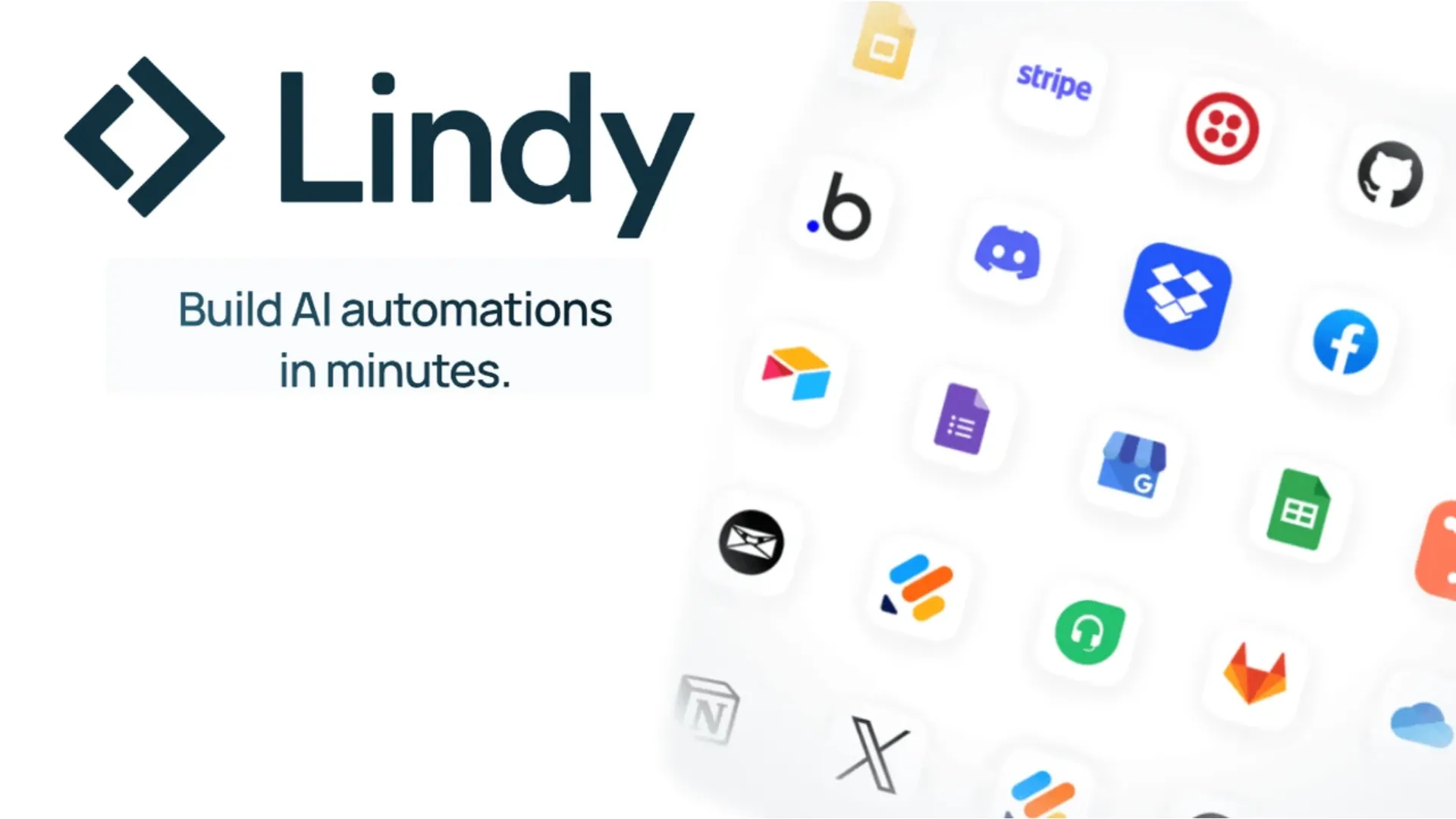
Lindy simplifies AI voice automation for growing teams seeking fast adoption and scalability.
It can independently handle inbound and outbound calls, qualify leads, schedule appointments, and send summaries to CRM and Slack channels after every call.
Its biggest advantage is its library of pre-built templates. From appointment scheduling to sales outreach and survey collection, these templates accelerate setup for businesses new to AI voice tools.
Key Features
- Drag-and-Drop Builder
Easy setup with visual flow management for non-technical users. - Extensive Template Library
Over 100 ready-to-use templates for different industries and use cases. - Multilingual Support
Handles more than 50 languages and dialects fluently. - Automatic Call Summaries
Each conversation is logged with summarized notes, enabling easy follow-up. - Integrations with Business Apps
Works with 40+ CRMs and scheduling platforms for automated workflow management.
Pros
- User-friendly for non-technical teams
- Strong integration options and reporting features
- Available free plan for testing and pilot projects
Best For
Lindy fits growing businesses that want to start automating outbound calls early and scale without migrating to more complex systems later.



